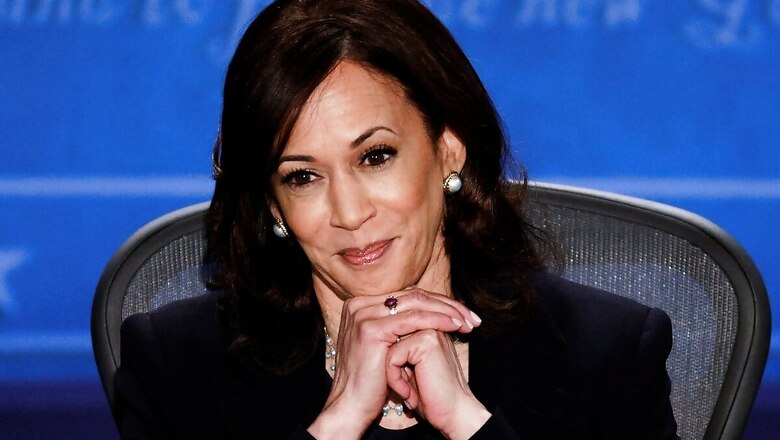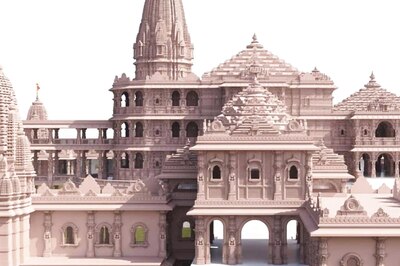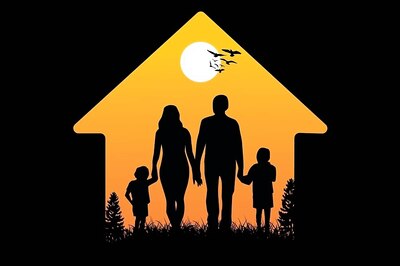
views
Why are Indian-Americans, just 0.82% of the total American voter base of over 240 million or just 1.9 million registered as voters and just 1% of the total US population, are seen as a rising political force with a formidable voice?
Why has Democrat presidential nominee Joe Biden pushed to release a statement in support of Indian-Americans and India?
Why does President Donald Trump say America loves India and spends a large amount of money to appeal to the Indian-American voters to vote for him, according to a report by ‘Politico’, an American political journalism outfit?
We can call it a mix of many factors, the need for India and US to come together due to the global geopolitical factors that reflects in US policies and statements of its leaders as well as the highly skilled Indian immigrant population in the US that is not only the wealthiest but is also becoming politically more proactive with Kamala Harris, a person of Indian origin as vice-presidential nominee.
Need for a Stronger Bilateral Tie
The Chinese threat has forced India and the US to come together. China’s expansionism is not only threatening India’s territorial sovereignty but is also challenging the role of the US as a responsible power in global geopolitical security affairs. It’s Belt and Road Initiative (BRI) is pushing many poor nations into a debt trap that China may use in future to develop its military bases overseas.
The increasingly belligerent nation is trying to create a China-dominated world order where it continues to remain a global manufacturing base while being able to colonise other countries, first by lending to them to create infrastructure facilities and then occupying them when they fail to repay the loan.
India and the US realise they need to come together to create an alternate anti-China bloc for trade and security that will be in the line of a free and democratic world — we can easily see this in the statements of Prime Minister Narendra Modi, Trump or Biden.
The Kamala Harris Effect – Everyone Loves a Good Vote Puller
Can people of Indian origin expect an Indian-origin president in the US? That would have sounded like day-dreaming before these polls, but not anymore.
Harris, who is partially of Indian and Jamaican origin but was raised by her Indian mother, is the running mate of Biden. If he is elected, she would be the first female, first Black and first Asian-American to become the US Vice-President. Harris, the first South Asian-American as US Senator, is also the first woman of colour to get a major party ticket for the presidential polls. It is a simple calculation that she can help Biden get votes from the coloured people. Data from Statista shows the population of African-Americans and Asians in the US was around 65 million in 2019.
And she might well be a presidential candidate as well in the 2024 presidential polls given the fact that Biden will be the oldest President in US history to assume office, at 78 years, and may not run for the next term.
California Senator Harris already ran a presidential campaign last year but had to end it and drop out of the Democratic presidential race because of financial constraints and she later on endorsed Biden as Democratic presidential nominee.
They Generally Vote for Democrats
Indian-Americans generally vote for Democrats. In 2016, 77% of them voted for Democrat presidential nominee Hillary Clinton though she lost to Trump. In 2020, most of them have opted to vote for a Democrat candidate, according to different opinion polls. The Indian-American Attitude Survey from Carnegie Endowment finds 72% of the respondents would vote for Biden. Another survey on Asian-Americans puts the number at 65%.
According to Indiaspora, a non-profit organisation of Indian-Americans, Indian-Americans are possibly the most Democrat-leaning community in the US after African-Americans. 65% of Indian-Americans identity themselves with Democrats, says a Pew Research report. For Republicans, it is just 18%. Minorities like Indian-Americans are naturally drawn to the Democratic Party due to the overtly religious nature of the Republican Party, writes Indiaspora. In a survey done by Indiaspora and AAPI Data on the 2020 polls, 66% of the respondents said they would prefer to vote for a Biden-Harris government.
Every Political Party Loves a Good Funding Community
The Los Angeles Times says Indian-American voters gave $8.4 million to the 2020 US presidential campaign and their contribution was more than that of the many renowned donors of Hollywood. An analysis of fundraising disclosures by the newspaper shows Indian-Americans contributed $5.4 million to Biden’s side and $3 million to Trump.
But according to Indiaspora, at least $16 million was contributed just to the Democratic presidential campaign this year by Indian-Americans and it was pushed by Harris’s nomination as the V-P candidate. They raised $3.3 million in a single night to help Biden’s campaign. Additionally, IMPACT, an Indian-American political action committee, raised $10 million in three months to support the Democratic campaign. In 2016, the community had raised over $10 million for the Democratic campaign to support Clinton.
The Wealthiest Group of Immigrants in America
Indian-Americans are the wealthiest group of immigrants in the US. AAPI Data says Indian-Americans are the highest earning ethnic group in the US with $139,000 median household income while the overall median US household income is $61,372 as per the US Census Bureau.
And they are among the most skilled lot the US has. 40% of Indian-Americans have either a professional or doctorate or a Master’s degree, five times the US national average. Indian-Americans hold twice the number of bachelor degrees than the normal US average and it is, in fact, a campaign promise of Biden to provide affordable education to Americans beyond high-school as most don’t prefer to study beyond due to high cost it involves.
Demography – Doubling Since 1980s
Since 1980s, Indian-Americans are doubling in size every decade. Data from Migration Policy Institute says the Indian-American population in 1980 was 206,000, which increased to 450,000 in 1990, 10,23,000 in 2000, 17,80,000 in 2010 and 26,88,000 in 2019. The Migration Policy Institute quotes US Census Bureau and 2019 American Community Surveys (ACS) as its source of information.
Data from the 2018 American Community Survey (ACS) from US Census Bureau corroborates it, saying the population of Indian-Americans in the US was 4.16 million in 2018, with 2.62 million as US citizens. 1.4 million Indian-Americans were naturalised citizens while 1.2 million were born in the US.
Indian-Americans, in fact, are seeing a much higher population growth. They grew 38% between 2010 and 2017, shows data from a non-profit organisation ‘South Asian Americans Leading Together’. Indian-American Attitude Survey from Carnegie Endowment adds that the growth in the Indian-American voter population has been more than the 2016 victory margins in swing states like Pennsylvania, Michigan and New Hampshire.
Read all the Latest News, Breaking News and Coronavirus News here

















Comments
0 comment